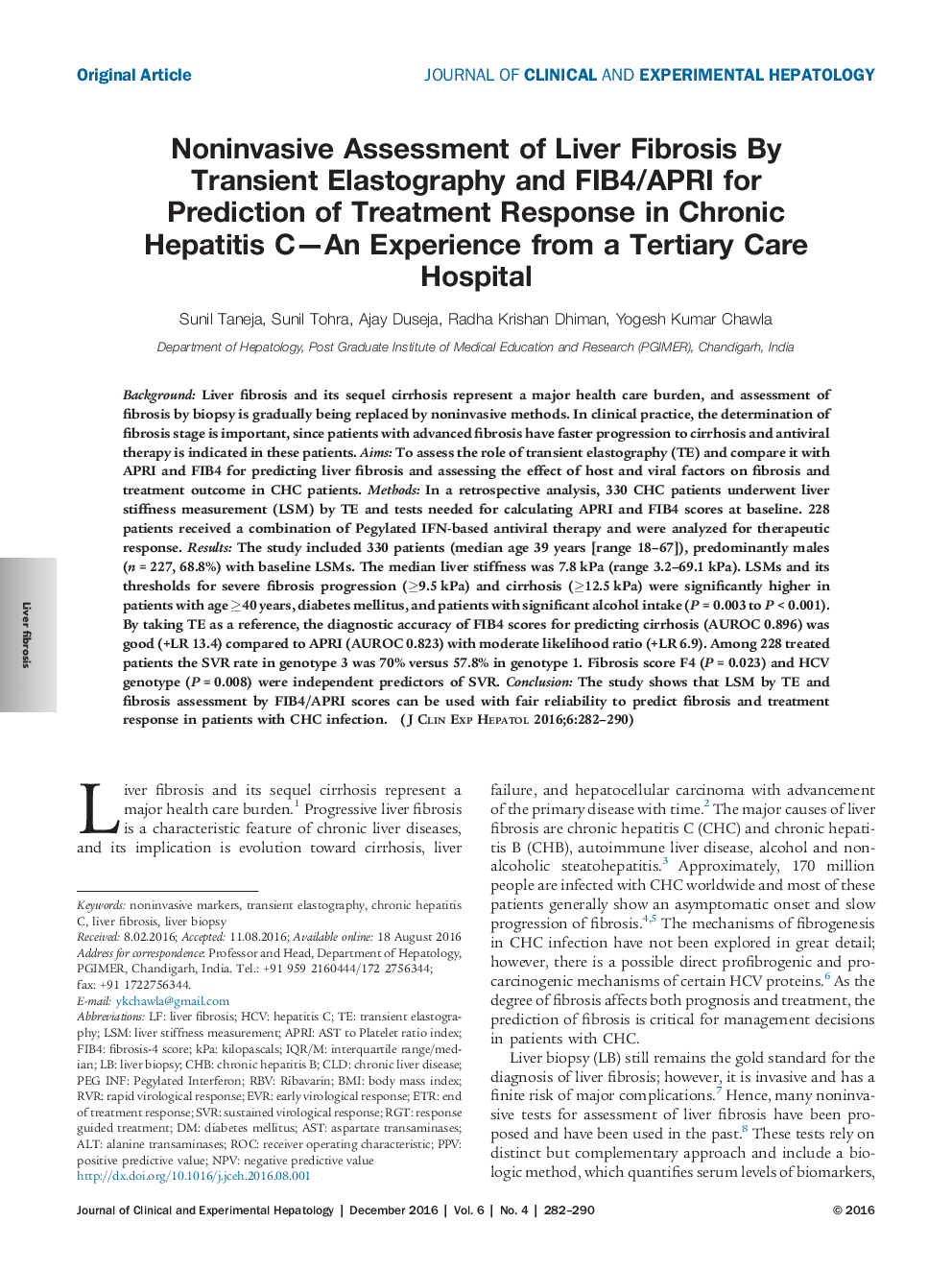| کد مقاله | کد نشریه | سال انتشار | مقاله انگلیسی | نسخه تمام متن |
|---|---|---|---|---|
| 5664959 | 1407728 | 2016 | 9 صفحه PDF | دانلود رایگان |

BackgroundLiver fibrosis and its sequel cirrhosis represent a major health care burden, and assessment of fibrosis by biopsy is gradually being replaced by noninvasive methods. In clinical practice, the determination of fibrosis stage is important, since patients with advanced fibrosis have faster progression to cirrhosis and antiviral therapy is indicated in these patients.AimsTo assess the role of transient elastography (TE) and compare it with APRI and FIB4 for predicting liver fibrosis and assessing the effect of host and viral factors on fibrosis and treatment outcome in CHC patients.MethodsIn a retrospective analysis, 330 CHC patients underwent liver stiffness measurement (LSM) by TE and tests needed for calculating APRI and FIB4 scores at baseline. 228 patients received a combination of Pegylated IFN-based antiviral therapy and were analyzed for therapeutic response.ResultsThe study included 330 patients (median age 39 years [range 18-67]), predominantly males (n = 227, 68.8%) with baseline LSMs. The median liver stiffness was 7.8 kPa (range 3.2-69.1 kPa). LSMs and its thresholds for severe fibrosis progression (â¥9.5 kPa) and cirrhosis (â¥12.5 kPa) were significantly higher in patients with age â¥40 years, diabetes mellitus, and patients with significant alcohol intake (P = 0.003 to P < 0.001). By taking TE as a reference, the diagnostic accuracy of FIB4 scores for predicting cirrhosis (AUROC 0.896) was good (+LR 13.4) compared to APRI (AUROC 0.823) with moderate likelihood ratio (+LR 6.9). Among 228 treated patients the SVR rate in genotype 3 was 70% versus 57.8% in genotype 1. Fibrosis score F4 (P = 0.023) and HCV genotype (P = 0.008) were independent predictors of SVR.ConclusionThe study shows that LSM by TE and fibrosis assessment by FIB4/APRI scores can be used with fair reliability to predict fibrosis and treatment response in patients with CHC infection.
Journal: Journal of Clinical and Experimental Hepatology - Volume 6, Issue 4, December 2016, Pages 282-290